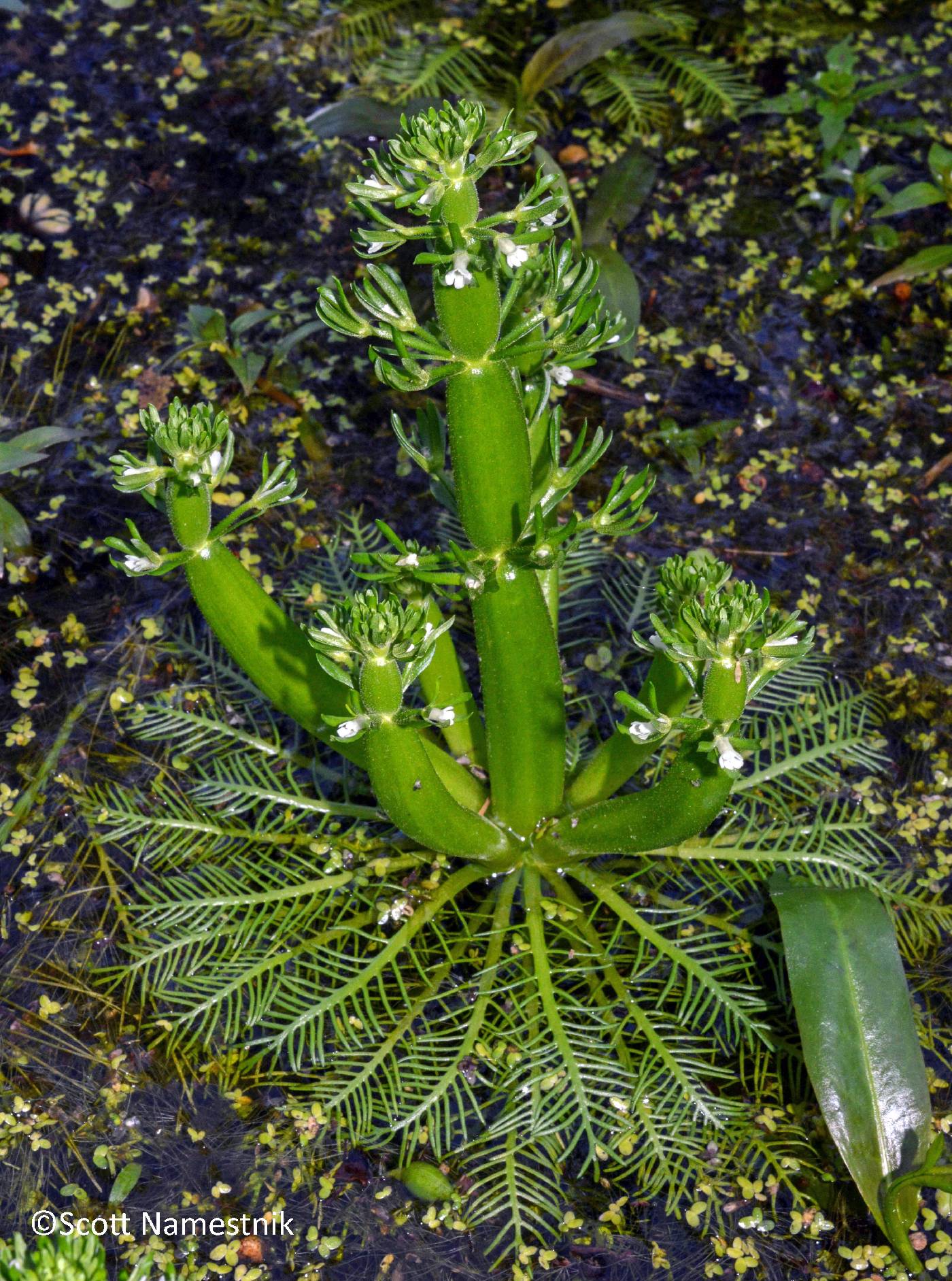
|
Family: Primulaceae |
Herbs annual or perennial, not cushion- or mat-forming, aquatic, not succulent; resin canals obvious. Rhizomes absent; roots fibrous. Stems mostly submerged, ascending or erect, rarely floating, simple, sometimes inflated. Leaves submerged to floating, cauline, alternate, opposite, or whorled, 1-2-pinnately divided into linear or filiform segments; petiole present, winged or not; blade oblanceolate to broadly elliptic, base cuneate to truncate, margins entire, apex rounded to acute, surfaces glabrous. Inflorescences sessile umbels of 1 (in young plants)-15 rachises, each rachis bearing 3-10 verticils, each verticil 3-10-flowered; bracts 1 per flower . Pedicels absent or ± erect to spreading. Flowers heterostylous; sepals 5, green, calyx campanulate, not keeled, glandular or stipitate-glandular, lobes not reflexed, much longer than tube; petals 5, white to yellow or violet, corolla tubular to salverform, lobes erect, shorter than tube, apex rounded; stamens included; filaments distinct; anthers not connivent. Capsules ± globose, valvate, dehiscent to base. Seeds 100-200, brownish to reddish brown, angular to globose, coarsely to finely reticulate. x = 10, 11. Hottonia palustris Linnaeus, found throughout Europe, differs from H. inflata, in part, by having stems sometimes stoloniferous, much larger and fewer flowers that are violet to yellow, corollas longer than the calyx, and a non-inflated rachis.
Stems 1-3 dm, branched at least above; lvs alternate and in a basal tuft, spatulate to obovate, obtuse or rounded, 2-5(-10) cm (including the petiole); racemes 3-15 cm; pedicels widely spreading, the lower usually 10-15 mm; cal-tube 1.5 mm; fls 2-3 mm wide; fr 2.5 mm. Brackish shores along the coast, and muddy banks of streams and ditches inland; tropical Amer., n. to N.B., s. Mich., and B.C. May-Sept. (S. parviflorus) Gleason, Henry A. & Cronquist, Arthur J. 1991. Manual of vascular plants of northeastern United States and adjacent Canada. lxxv + 910 pp. ©The New York Botanical Garden. All rights reserved. Used by permission. |
This project was made possible in part by the Institute of Museum and Library Services [MG-70-19-0057-19].
Powered by Symbiota



